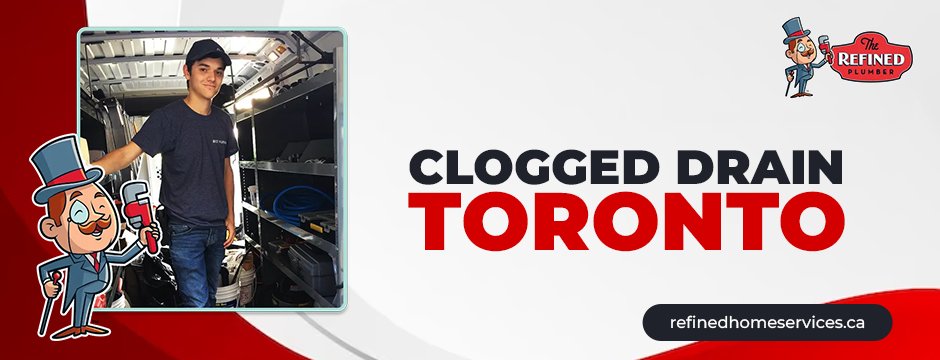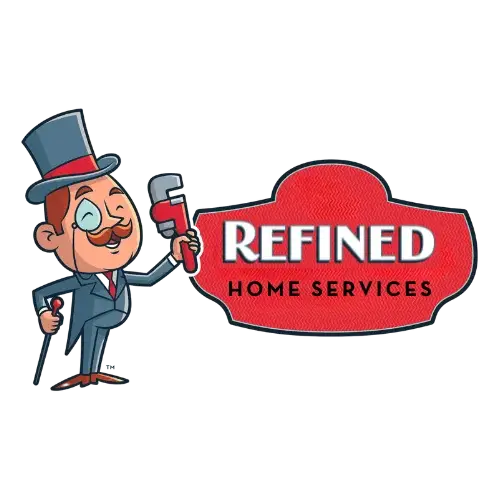Drain Rooter Service: How to Prevent Shower and Toilet Clogs
A smoothly functioning bathroom is a cornerstone of any well-maintained home. However, even with modern plumbing systems, the bathroom can become a hotspot for drain issues, particularly in the form of shower and toilet clogs. These inconveniences not only disrupt daily routines but can also lead to costly repairs if left unaddressed. The good news is that with a bit of proactive maintenance of Drain Rooter Service, you can avoid these common bathroom drain problems and keep your plumbing running smoothly.

Understanding the Culprits
Picture this: you’re going about your daily routine when suddenly, your shower drain gurgles, or your toilet flushes with reluctance. If you’ve ever faced these plumbing woes, you’re not alone. Understanding the common culprits behind shower and toilet clogs is the first step in preventing these inconveniences. Let’s dive into the world of drains to uncover the primary offenders and learn how to mitigate their impact on your plumbing system.
The Culprits
Hair: A main protagonist in the world of shower clogs, hair often takes center stage. As you shampoo, condition, and rinse, strands of hair make their way down the drain. Over time, these hairs intertwine, forming a net that traps other debris and impedes water flow.
Soap Scum: The aftermath of soap and water’s delightful dance is not always as glamorous. Soap scum, a combination of soap particles, minerals from water, and body oils, can cling to the walls of pipes and drains. As it accumulates, it can create a sticky barrier that traps other substances, exacerbating clogs.
Residue from Body Products: From lotions to exfoliants, the products we use on our bodies often contain oils, creams, and microbeads. These can wash off and accumulate in the drain, combining with other elements to create blockages.
Excessive Toilet Paper: Even though toilet paper is made to break down in water, using too much of it can clog your plumbing. Flushing large wads of toilet paper at once can create clumps that lead to clogs.
Sanitary Products: Flushing feminine hygiene products, including tampons and pads, is a common but harmful practice. These items can expand in water and get caught in pipes, leading to blockages and potential plumbing issues.

Foreign Objects: Accidents happen, and sometimes items that shouldn’t be flushed find their way into the toilet. This includes everything from children’s toys to cotton swabs. These objects can easily become lodged in pipes and lead to clogs.
Before delving into preventative measures, it’s essential to understand the common culprits behind shower and toilet clogs. In the shower, hair, soap scum, and residue from body products are primary offenders. Over time, these substances can accumulate in the drain, restricting water flow and causing blockages. In the case of toilets, excessive use of toilet paper, sanitary products, and the accidental flushing of foreign objects can lead to clogs. Find Frozen Pipe Repair service now!
1. Hair Catchers and Strainers: A Simple Yet Effective Solution
Prevention truly does start with the basics. In the shower, the relentless accumulation of hair can lead to stubborn clogs. To combat this, invest in a hair catcher or strainer to place over your drain. These affordable devices are designed to trap hair and debris before they can make their way down the drain. Regularly removing and cleaning the hair catcher is a quick and simple task that can save you from facing more significant drainage problems in the future.
2. Regular Cleaning Routines: Keep the Drains Clear
Consistency is key to maintaining clear drains. Incorporate a monthly cleaning routine to keep clogs at bay. Begin by removing the drain cover and using a bent wire or a drain snake to extract any accumulated hair and gunk. This proactive step can prevent blockages before they become troublesome. Afterward, pour hot water down the drain to help dissolve lingering soap scum and other residues. In the case of toilets, remember that only toilet paper and waste should be flushed. Items like wet wipes, feminine hygiene products, and paper towels should always find their way to the trash.
3. The Power of Prevention: Routine Flushing and Ventilation
Beyond cleaning, a little prevention can go a long way. In toilets, implementing a routine flushing practice with extra water can help prevent sediment buildup and ensure a consistent flow. Adequate bathroom ventilation is another critical aspect of prevention. The moisture in the air can contribute to the growth of mold, mildew, and soap scum—culprits that can eventually find their way into your drains. A well-ventilated bathroom creates an environment that’s less conducive to the conditions that cause clog-causing substances to thrive.

4. Eco-Friendly Cleaning Alternatives: Avoid Harsh Chemicals
When it comes to cleaning your bathroom drains, opt for eco-friendly alternatives instead of harsh chemicals. Traditional chemical drain cleaners can corrode your pipes over time and might not always effectively remove clogs. An effective natural solution involves using a mixture of baking soda and vinegar. Simply empty this mixture into the drain, then follow it with hot water. This combination creates a chemical reaction that helps break down small clogs and maintains the overall health of your plumbing system.
5. Professional Maintenance: Seek Expert Assistance
While proactive measures can significantly reduce the likelihood of minor clogs, there are times when professional intervention is essential. When faced with more severe issues or persistent clogs, it’s wise to seek the expertise of a professional plumber. A qualified plumber can conduct comprehensive inspections, perform advanced techniques such as hydro jetting to clear stubborn clogs, and provide valuable advice on maintaining your bathroom drains for the long term.
Conclusion
Maintaining your bathroom drains isn’t just about preventing clogs—it’s about preserving the functionality and longevity of your plumbing system. By incorporating these preventative strategies into your routine, you can avoid the inconvenience and expense of dealing with shower and toilet clogs. Remember that proactive maintenance is an investment in the health of your home’s plumbing, allowing you to enjoy a smoothly functioning bathroom without unexpected disruptions. With a little effort and attention, you can ensure that your daily routines remain undisturbed by plumbing problems, and your bathroom remains a haven of comfort and convenience. Get the best Clogged Drain Toronto service now only at The Refine Plumber. Visit now!

